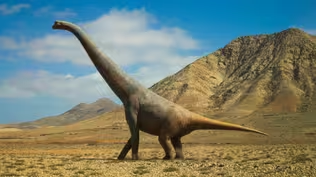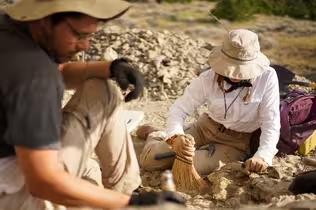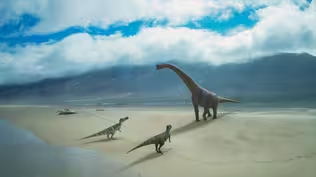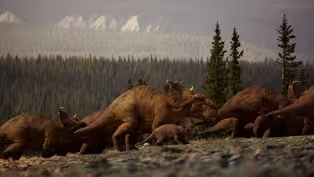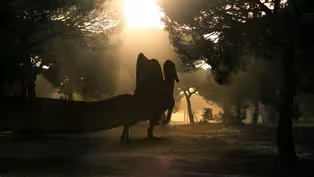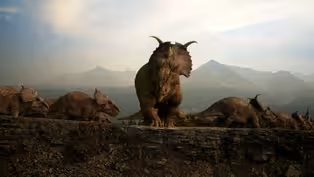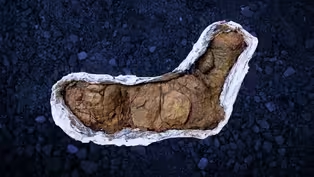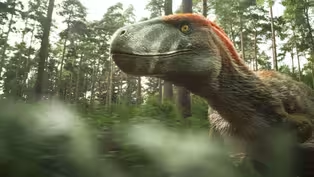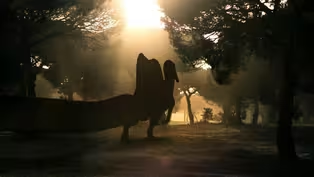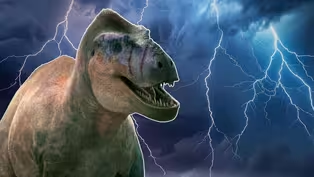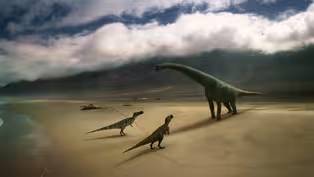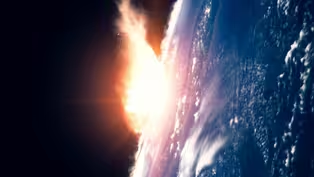
How Walking with Dinosaurs Created the Most Accurate Dinos Ever
Special | 6m 32sVideo has Closed Captions
Join the team behind the scenes!
The BBC’s Walking With Dinosaurs team brought many dinosaurs to life across the series - but perhaps the largest challenge was one of the biggest dinosaurs to ever be found in Europe… Lusotitan. Join the team behind the scenes as they weave cutting edge science, expert VFX, and a very experienced crew pointing their cameras at… nothing.
Problems playing video? | Closed Captioning Feedback
Problems playing video? | Closed Captioning Feedback
Narrator: Shane C. Campbell-Staton With Thanks: Universidad Nacional de Educación a Distancia, Instituto Dom Luiz, Museu Nacional de História Natural e Da Ciência, Universidad Complutense De Madrid, Faculdade de Ciências...

How Walking with Dinosaurs Created the Most Accurate Dinos Ever
Special | 6m 32sVideo has Closed Captions
The BBC’s Walking With Dinosaurs team brought many dinosaurs to life across the series - but perhaps the largest challenge was one of the biggest dinosaurs to ever be found in Europe… Lusotitan. Join the team behind the scenes as they weave cutting edge science, expert VFX, and a very experienced crew pointing their cameras at… nothing.
Problems playing video? | Closed Captioning Feedback
How to Watch Walking with Dinosaurs
Walking with Dinosaurs is available to stream on pbs.org and the free PBS App, available on iPhone, Apple TV, Android TV, Android smartphones, Amazon Fire TV, Amazon Fire Tablet, Roku, Samsung Smart TV, and Vizio.
Providing Support for PBS.org
Learn Moreabout PBS online sponsorshipMore from This Collection
Check out our 12 digital exclusives from our series Walking with Dinosaurs with BBC.
When Dinosaurs Ruled the Arctic Circle
Video has Closed Captions
Very few dinosaurs made it as far North as the Arctic Circle...except for two. (5m 52s)
We Were Wrong About Spinosaurus
Video has Closed Captions
Millions of years ago, dinosaurs ruled the Earth. But underwater it was a totally different world. (6m 36s)
Were Dinosaur Brains Designed For Combat?
Video has Closed Captions
Did Pachyrhinosaurus bones always gather in such great numbers? (5m 42s)
How We Solve Jurassic Mysteries from One Bizarre Fossil
Video has Closed Captions
Would you lick a 65-million-year old dinosaur poop? (5m 19s)
How to Find a Dinosaur that Hollywood Dreamed Up
Video has Closed Captions
What would make a Utahraptor so much larger than other raptor species? (5m 50s)
How the Walking with Dinosaurs Team Brought a Dinosaur Back to Life
Video has Closed Captions
The Walking With Dinosaurs team reveal how they created the Spinosaurus. (5m 50s)
How Extreme Weather Is Revealing — And Destroying — Dinosaur Fossils
Video has Closed Captions
Imagine finding a rare fossil that you’ve been desperate to find - only for it to be put at risk. (5m 59s)
How an Evolutionary Arms Race Created Bizarre Dino Designs
Video has Closed Captions
It’s grudge match time. Except that this one took place over millions of years. (5m 32s)
The Dinosaurs that Could Cross the Atlantic
Video has Closed Captions
How did dinosaur fossils get there? (5m 42s)
Did Dinosaurs Abandon Their Young to Help Them Survive?
Video has Closed Captions
In late Cretaceous Alberta, many apex predators roamed free, so how did the prey survive? (5m 45s)
Did a Meteor Kill All the Dinosaurs?
Video has Closed Captions
Did the asteroid kill the T. rex and Triceratops? (5m 42s)
Providing Support for PBS.org
Learn Moreabout PBS online sponsorship[ethereal music] -[Narrator] One hundred and fifty million years ago, in the late Jurassic, there was an undisputed king of Europe.
One of the biggest dinosaurs ever found on the continent, a 35-feet tall, 45-ton giant, Lusotitan.
The challenge for the Walking with Dinosaurs team is, how do you bring this gigantic herbivore to life?
Capturing a colossus like Lusotitan requires a delicate blend of cutting-edge science, creative filmmaking, and elite visual effects.
Oh, and a man on a beach holding a really long pole.
At the VFX studio, our long-extinct Lusotitan is constantly evolving, from initial sketches to relatively basic 3D models, and into increasingly realistic moving dinosaurs.
But out in the field, the film crew is shooting the landscapes that the digital dinosaurs will eventually inhabit.
They've come to this beach in Portugal, following right in the footsteps of where these ancient beasts once roamed.
-[Stephen Cooter] We're here today to film a sequence where two male Lusotitans are fighting over a female.
-[Narrator] Every scene has been meticulously researched and planned.
But on the ground, you still need a healthy dose of imagination.
-[Stephen] One of the challenges is um kind of making sure, with an animal that size, that you've got enough space for it and that it's all in the frame.
You know, these things were, you know, as long as a swimming pool, and I guess it's not a kind of animal on a scale of anything that's alive today, so it's hard to imagine how big they are.
-[Narrator] So, for now, our soon-to-be magnificently visualized dinosaur is just, yeah, that man with the pole from earlier.
-We work to absolute scale of what we would expect the animals to be, and so rather than just sort of shooting some fresh air over there, even though that's just a man holding a pole, eventually this will be a glorious shot of a Lusotitan sort of tilting up to his face, all being well.
-[Narrator] As the fight reaches its climax, one defeated Lusotitan comes crashing down to earth.
[deep, anguished bellow] But the victorious Lusotitan still has one more battle to win for the heart of his mate.
-[Stephen] So, he's won the fight with the male, but now he's got, I guess, a load more work to do because he's got to win over the female, and for dinosaurs like this, we think they may have engaged in a kind of mating ritual, like a dance.
-[Narrator] With the real-life background footage shot, it's now up to the VFX team to truly bring Lusotitan to life.
To visualize a mating scene between two 35-foot giants, the VFX artists are going to need some help.
Luckily, they have some inspiration from the natural world today.
[woman harmonizing] [water splashing] But how would the gigantic neck of a Lusotitan actually move?
Could its neck even support the type of movement required?
Every single decision made by the film and VFX crew is taken only after consulting with the world's top dinosaur scientists.
Paleontologist Pedro Mocho can prove that Lusotitan's neck was much lighter than you might expect.
[soft bellows] And instead of solid bone, Lusotitan could reinforce its mammoth neck with air sacs that burrowed through its neck and backbone.
-[Pedro Mucho] This kind of structure allows them to support more weight, be more dynamic and flexible.
-[Narrator] Flexible enough to dance.
[ground rumbles] But what happens if the Lusotitan's dancing isn't quite sealing the deal?
-[Stephen] So, we've got to the point now where our hero's won the fight with the male, he's been kind of doing a mating dance, but um she's still not kind of buying it.
So, this is where he plays his uh trump card.
-[Narrator] And that trump card is this.
This bizarre spectacle may look impossible, but this too takes its inspiration from dinosaurs' only living descendants, who can certainly be quite flamboyant when trying to impress a mate.
But if nature provides the inspiration, the latest science may back it up.
There could be direct fossil evidence for it in the skull of Lusotitan's closest relative.
-[Pedro] So here we have a cast of a Giraffatitan skull.
-[Narrator] It supports a huge ridge of bone that may have housed a large crest that some think could have flared and bulged just like the most extravagant of modern birds.
-[Pedro] They may have similar functions of some of the crests that we can see in birds.
Exhibition, for mating, it's evolving here for the first time in this group of dinosaurs.
-[Narrator] It's go big, or go home.
And on this occasion, this Lusotitan is not going home alone.
And now, after years of planning, research, and filming, the very latest science and cutting-edge animation come together, finally transforming and bringing these titans to life.

- Science and Nature

Explore scientific discoveries on television's most acclaimed science documentary series.

- Science and Nature

Capturing the splendor of the natural world, from the African plains to the Antarctic ice.












Support for PBS provided by:
Narrator: Shane C. Campbell-Staton With Thanks: Universidad Nacional de Educación a Distancia, Instituto Dom Luiz, Museu Nacional de História Natural e Da Ciência, Universidad Complutense De Madrid, Faculdade de Ciências...

